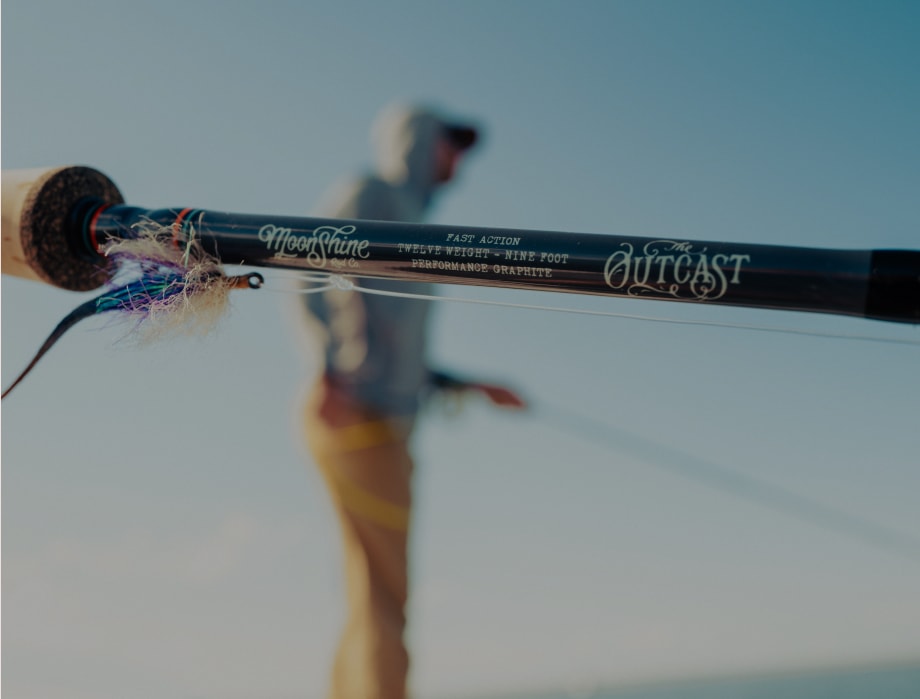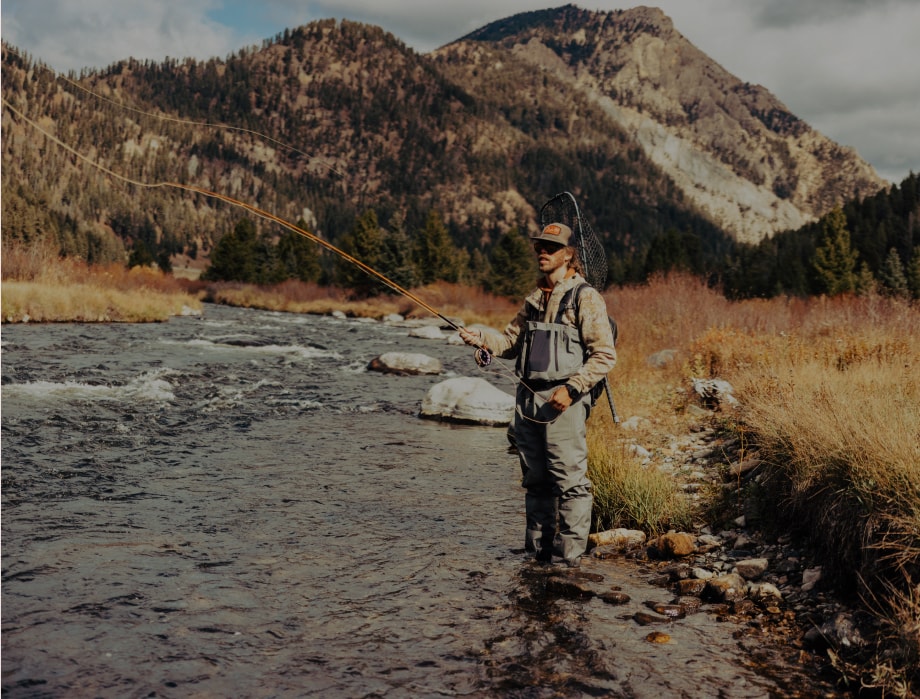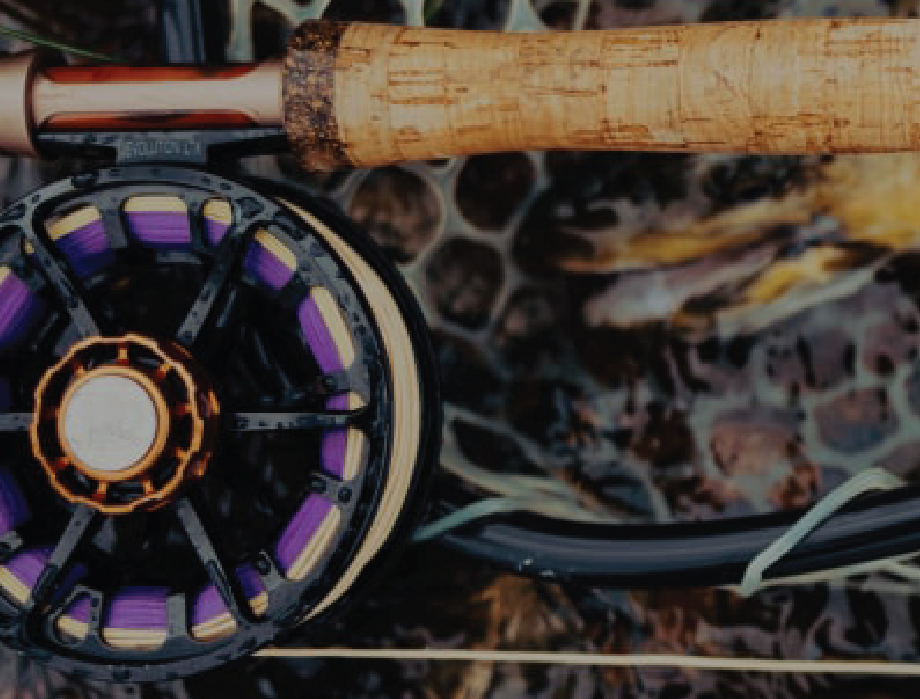We all know that mastering a fly cast is a life-long endeavor. Some days we’re throwing tight loops wherever we want them to go, and other days, well, we’re spending more time untangling our line than actually fishing. It happens to the best of us.

That being said, those bad days don’t have to be so frequent. Fly-fishing guide and certified casting instructor Susan Thrasher excels at pointing out the flaws in a cast and finding the remedy. She has years of experience helping anglers of all levels (if you want to know more, read her about her journey here) and we thought it’d be a good idea to pick her brain for a bit.
It turns out there are a few mistakes that are extremely common, and they also have common remedies as well. Here are nine casting mistakes and Susan’s advice for solving them.
Too Much Slack to Start
Symptoms: Tangled line to start the cast, lack of immediate power
It helps to start your cast on the right foot, and one of the most common mistakes Susan sees is angler pulling out too much line and starting their first cast with slack:
“They’ll have too much line out on the water to begin their cast, and most times it's in a slack form. Folks really need to master the roll cast so they can cast out a nice straight line. The straighter your line when you start your cast, the better cast it’s going to be.”
Simply roll cast some line out before you do anything, and you’ll have a nice, straight, taut fly line to start your overhead cast.
Starting With the Rod Tip Too High
Symptoms: Having to bring your arm too far back, not feeling the rod load properly
Another problem that pops up at the beginning is the simple positioning of the rod. If your tip is too high, you’ll be sacrificing valuable room in your motion to capture the rod’s power:
“When you start with your rod tip down close to the water, you get the maximum load in the rod because surface tension is holding the line down on the water. So, you're going to get the maximum power if you start with the rod tip just a few inches off the water.”
By starting too high, you’ll be behind your cast before you even know it, trying to catch up to the slack tension in your line. Drop that rod tip and make good use of the water’s surface tension.
Ripping Instead of Pulling
Symptoms: Scaring any fish within catching distance, tiring out your arm
One last issue before we really even get to the casting. This generally comes with experience, but there’s no need to “rip” the line violently off the water. In fact, it will waste a lot of energy and cause quite a ruckus. Here’s a great tip Susan uses for her students:
“Ripping the line makes it feel like the line weighs a ton. Peel it off the water, starting from a slow acceleration to the leader and then, in one stroke, just snatch the leader off the surface. You peel it to a stop. For students, I tell them to peel the line off the water like you're peeling a banana and then when you get to the leader, snatch it to a stop.”
Once you get used to the weight of the line and the motion of your rod, it’ll be like second nature. That being said, as soon as you get tired or frustrated, you’ll go right back to ripping, so stay on top of it.

Breaking the Wrist
Symptoms: Slapping the water behind you with the fly, wide loops
Perhaps the most common mistake in every fly cast, the ol’ tomahawk is a killer of tight loops. To correct this problem, Susan isn’t afraid to take it to extremes:
“If you have long sleeves, you can take the rod butt and stick it down into your jacket sleeve or shirt sleeve, and you'll be able to see a difference. When I'm teaching, I'll tell people to actually stop the rod tip straight up and down, vertically over their head. I never tell someone to stop at one o'clock or two o'clock. When they do that, even if they're stopping at one o'clock in their mind, they're going to stop at four o’clock.”
In short, if you think your casting motion is tight enough, it’s probably not. It’s pretty difficult to overdo it, so err on the side of 10-to-12 o’clock and you’ll probably be hitting it just right.
Not Stopping in the Backcast
Symptoms: No power in the forward cast, rod not loading, fly line sliding down the guides
A poor backcast is a common mistake because the action isn’t happening in plain sight. It’s behind you. So, in your head you think you’re halting the cast perfectly, but more often than not Susan sees it sliding to a stop, or not even stopping at all:
“The most important part of a cast is the backcast’s stop. Too often, I see what I just call a ‘dull stop,’ where it really needs to be a sharp, crisp stop. Whenever I'm teaching the backcast, as soon as someone's supposed to stop, I'll clap. Then, I’ll tell them, ‘When I clap, that's how crisply your back cast should be stopped."
The stop is everything. It gives your line something to work off of, and if you’re not stopping you’ll end up with a weak cast. Bring that motion to a screeching halt and you’ll be using your rod to its full potential.
Rushing the Backcast
Symptoms: “Whip cracking” the line and losing flies, rod not loading properly
Luckily, one of the most common fly-casting mistakes is one of the most easily addressed. Just give the line a bit more time on the backcast to let it do what it does best. Otherwise, you’ll get the infamous “whip”:
“If you don't let the line straighten all the way out behind you, you know you've messed it up when you get that ‘whip crack,’ and you may even whip the fly off of the line. You need to give the line a bit more time, even just a split second longer to let it straighten out. When you do come forward, you'll have a nice loading of the rod.”
To see this in action, you can always turn sideways when practicing and watch your backcast to see if it’s unfurling properly. On slower-action rods, like our buttery-smooth Revival line, you may need to give the rod a bit more time than you’re used to.

Forward Creep
Symptoms: Ripples in the line when you cast forward, arm needing to “throw” the line out
This is the silent killer of many fly casts because most anglers don’t even know they’re doing it. When you cast forward, be sure it’s all in one motion. Here she explains the difference between creep (bad) and drift (good)
“On the backcast, what you should do is stop and then continue back a few more inches. It's like follow-through backwards. Someone told me it's like punching a cloud. Keep the same angle between your rod butt and your forearm, but you stop and then your rod tip continues to climb another two inches. It gives you an extra amount of loading on that forward cast. Creep is just the opposite. Drift is good, creep is bad. Creep is when you stop and then you come forward before you're actually committing to the forward cast. It's almost like a ricochet. You stop and then you come forward and then you cast, which you can't do. Once you stop, don't move another inch unless you're moving backwards.”
In short, it’s good to continue drifting backward in your backcast a little bit after the stop. But, if you’re casting forward, make sure you’re fully committing to a full motion and not stuttering.
Too Much Muscle
Symptoms: Tailing loop (when your loop becomes a circle), improper fly placement, tired arms
Listen up, musclemen and women. You don’t need to crush your cast to get the fly out there. In fact, great fly rods (like *ahem* ours) are designed so you don’t have to work hard to make a great cast. If you’re working hard, you’re not casting correctly:
“If you’re overpowering the cast, you’ll get that tailing loop and also the line will bounce back at you. It will unfurl in front of you, but then it'll kick back towards you and you're actually going to lose distance. You want your line to have just enough power so that it uncurls and lands straight on the water. Too much power is going to cause ripples and slack to form in your line.”
Work smart, not hard. If your line is landing past your fly, this is probably what’s going wrong.
Too Many False Casts
Symptoms: Tangled line, lost flies, tired arms, weird looks from other anglers
We’ll end this lesson on a classic. Too many anglers have fallen victim to a harrowing syndrome called A River Runs Through It—good movie, not a great example of fly fishing. Susan’s advice is to do the opposite of what Brad Pitt does and just give it one or two casts before getting the fly in the water:
“Try and limit the false cast to one, maybe two at the max. To false cast five or six or seven times is too much. First, you need to have your fly in the water to catch fish, but also the more times that you false cast, the more times you have to screw things up.”
Every cast you make you’re rolling the dice, so you may as well put the odds in your favor and get that fly in the water.
A big thanks to Susan Thrasher for sharing her tips. If you’re interested in fine-tuning your skills or hunting down monster trout, there’s no better guide to go with—you can learn more about her services at southernbrookies.com. Hopefully, her advice can help you correct some on-the-water problems. What are some of the more common casting issues you run into on the water? Let us know in the comments below!










4 comments
Pete
I purchased a Midnight Special months ago. Never saw this rod, cast, even held it my hands… after casting this rod on the lawn, I couldn’t wait for moving water. It did it’s job and I couldn’t ask for more. Moving to larger water and longer casts, I was quickly becoming a fan… super nice rod in every way. If you need your fly through the wind, across the river or just to preform as needed, this one does the trick. For the price you are way ahead… nice job Moonshiners.!!
David Evans
As a guide for the last 10 years, I can only say “Amen Sister”. Only problem is you have to get them fishing before they have all the skills. Wish she would pre-certify my clients.
George Nolevski
Hi Susan,
Some great advice there, just wondering, I need some one -on-one tuition, plus I can show you some places you haven’t fish here in Sydney Australia lol!
Once again some great advice
Regards
George Nolevski
Paul Churchill
Good tips I try not to think to much about timing just relax and do it then my casts go pretty good
Leave a comment
All comments are moderated before being published.
This site is protected by hCaptcha and the hCaptcha Privacy Policy and Terms of Service apply.